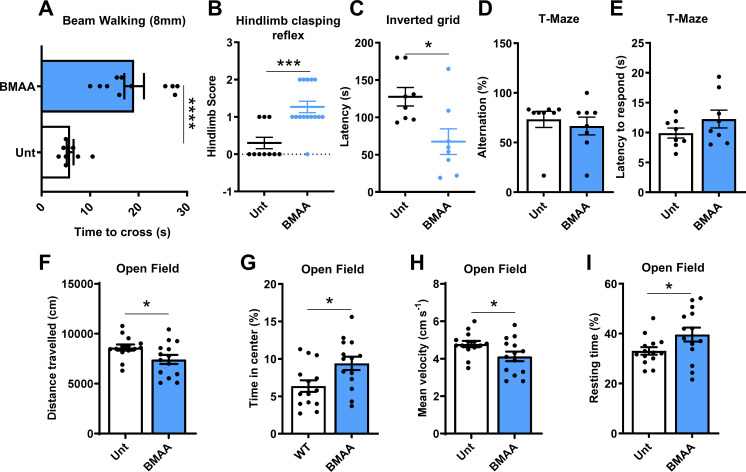Figure 8.
β-N-methylamino-L-alanine (BMAA) in vivo administration induces motor behavioural changes. (A) Balance and motor coordination performance was assessed with the beam walking test (n values for untreated (Unt)=9 and BMAA=11, Unt vs BMAA, ****p<0.0001). (B) Hindlimb clasping reflex was monitored, as a quick phenotypic neurological scoring system for evaluating disease progression (n values for Unt=10 and BMAA=15, Unt vs BMAA, ***p=0.0008). (C) Inverted grip test was used to evaluate muscular strength of limb muscles (n values for all conditions=8, Unt vs BMAA, *p=0.0132). (D–E) Cognitive and memory ability was assessed using a T-maze. (D) Percentage of alternation between arms and (E) latency to respond (s) was assessed (n values for all conditions=8, Unt vs BMAA, D, p=0.2165; E, p=0.192). (F–I) Locomotor activity was evaluated in an open field arena. (F) Distance travelled (cm), (G) % time spent at the centre of the arena, (H) mean velocity (cm.s−1) and (I) % resting time (n values for all conditions=14, Unt vs BMAA, F, *p=0.0384; G, *p=0.0165; H, *p=0.0383 and I, *p=0.0495). Data represents mean+SEM. Statistical analysis: Unpaired Student’s t-test was performed in A, C and E–I, and Mann-Whitney test in B and D.

